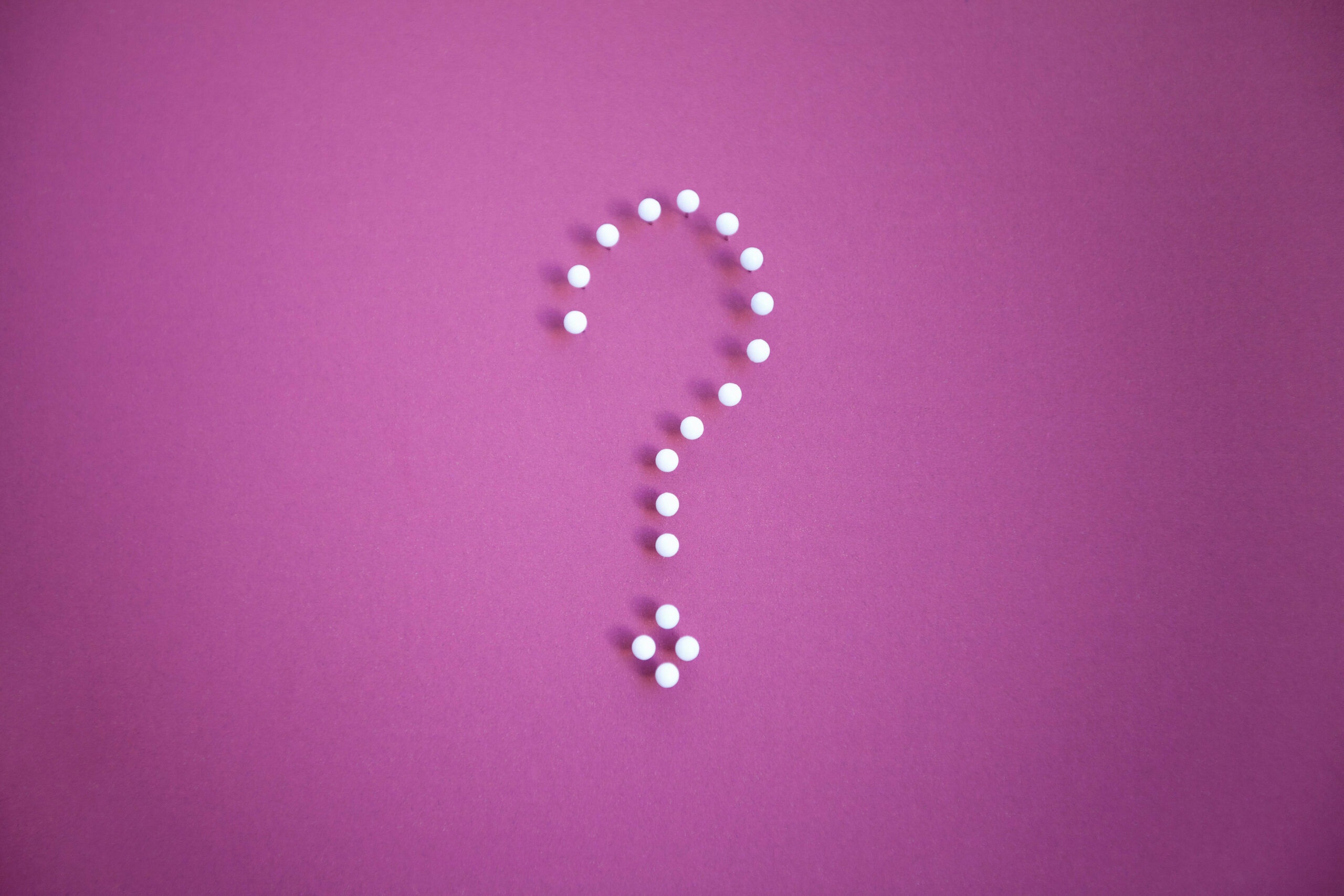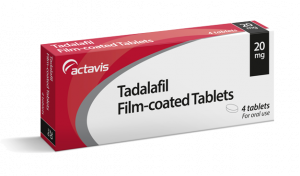How often can I take Tadalafil?
Short facts about Erectile Dysfunction and Tadalafil
- On December 1992, The National Institute of Health (NIH) defined impotence as “male erectile dysfunction, that is, the inability to achieve or maintain an erection sufficient for satisfactory sexual performance.
- More than 150 million men worldwide are affected by erectile dysfunction.
- Erectile dysfunction affects men of different ages, even younger ones.
- The most common risk factors for erectile dysfunction include cardiovascular disease, hypertension, diabetes mellitus, tobacco use, hyperlipidaemia, hypogonadism, lower urinary tract symptoms, metabolic syndrome, and depression.
- PDE5 inhibitors have revolutionized the treatment of erectile dysfunction.
- Tadalafil belongs to the class of drugs called phosphodiesterase type 5 (PDE5) inhibitors.
- Tadalafil received the approval to be used in the treatment of erectile dysfunction first in Europe, in 2002 and 1 year later in the United States of America.
- In 2009, US Food and Drug Administration (FDA) approved tadalafil for the treatment of pulmonary hypertension.
- On October 2011, tadalafil was approved by Food and Drug Administration for treating signs and symptoms of benign prostatic hyperplasia and also for simultaneous benign prostatic hyperplasia and erectile dysfunction.
Click HERE to View Tadalafil Prices > >
What is Tadalafil?
Tadalafil is a drug available on prescription prescribed for men with erectile dysfunction resulting from certain medical conditions.
Tadalafil is also prescribed for men with prostate gland enlargement. The prostate gland commonly becomes larger in older men. The condition is also called benign prostatic hyperplasia (BPH). The prostate is situated close to the bladder, so its enlargement can cause problems with passing urine. Common symptoms that are experienced are having to wait before your urine starts to flow, taking longer in the toilet, dribbling urine, and a feeling that your bladder is not quite empty. Tadalafil works by improving the blood flow to the prostate and bladder, and by relaxing the muscles in these areas. These actions help urine to follow more easily.
Tadalafil tablets for erectile dysfunction treatment and benign prostatic hyperplasia are found under the brand name Cialis marketed by a joint venture of Eli Lilly and ICOS Corporation called Lilly ICOS, LLC.
Another brand of tadalafil tablets called Adcirca® is used to treat a completely different condition called pulmonary arterial hypertension.
Erectile Dysfunction
Erectile dysfunction represents the persistent inability to attain and maintain an erection sufficient to permit satisfactory sexual performance for at least 3 months. Erectile dysfunction has a significant impact on the physical and psychological health of men worldwide and can also affect the quality of life of both the sufferers and their partners.
Multiple body systems are involved in the pathophysiology of erectile dysfunction, including neuronal, hormonal, mechanical and psychological.2
Penile erection is a complex phenomenon which involves a delicate and coordinated balance between neurological, vascular and tissue compartments. This includes arterial dilation, relaxation of the trabecular smooth muscle, and activation of the corporeal veno-occlusive mechanism. 7,8
During the time, erectile dysfunction was associated with several prescription medications including:
- Antihypertensive drugs
- Antiulcer drugs (proton pump inhibitors and cimetidine)
- Lipid-lowering (statins and fibrates)
- 5-Alpha-reductase inhibitors (finasteride and dutasteride)
- Antidepressants
- Antipsychotic drugs (risperidone)
- Testosterone and anabolic steroids. 9
Erectile dysfunction treatment
In the past, the treatment of erectile dysfunction was limited to vacuum-constriction devices, prosthetic implants, intracavernosal injections, and intraurethral suppositories due to poor understanding of the physiological mechanism of erection.10
The development of the phosphodiesterase type 5 inhibitors represented a key point in the management of Erectile dysfunction and they have become the first line therapy, recommended by both European Association of Urology (EAU) and American Urological Association (AUA).10
In this modern era, selective phosphodiesterase type 5 inhibitors (PDE5Is) are the mainstay of treatment for ED.6 These medications are highly efficacious, are well tolerated, and have very favourable safety profiles. Four phosphodiesterase type 5 inhibitors are available on market: sildenafil (Viagra®, Pfizer), vardenafil (Levitra®, Bayer), tadalafil (Cialis®, Lilly-ICOS) and avanafil (Stendra®). These agents do not directly cause penile erections but affect instead of the response to sexual stimulation. Sildenafil was the first in this series of phosphodiesterase type 5 inhibitors. The newest phosphodiesterase type 5 inhibitor is avanafil, which has been approved by the US Food and Drug Administration (FDA) in April 2012. Each of these drugs is highly efficacious in the management of ED although pharmacokinetic and side-effect profiles differ and results for each drug may vary for individual men. 10,11

Phosphodiesterase type 5 inhibitors are recommended as the first-line therapy for erectile dysfunction. According to the European guidelines the choice between a short-acting phosphodiesterase type 5 inhibitor and a long-acting phosphodiesterase type 5 inhibitor depends on the frequency of intercourse (occasional use or regular therapy, 3-4 times weekly) and the patient’s personal experience. 9
How can you prevent erectile dysfunction?
Erectile dysfunction could be prevented by optimal management of several medical conditions like diabetes, heart disease, and hypertension which have been reported to be associated with its development. For attaining and maintaining a firm erection is required a good vascular function. For this reason, it is reasonable to assume that lifestyle modifications to improve vascular function (smoking cessation, maintenance of ideal body weight, and regular exercise) may prevent or reverse erectile dysfunction. 9
Tadalafil mechanism of action in erectile dysfunction
Tadalafil is a selective, reversible inhibitor of cyclic guanosine monophosphate (cGMP)-specific phosphodiesterase type 5 (PDE5). Phosphodiesterase type 5 is an enzyme present mostly in the smooth muscle of the corpus cavernosum that selectively claves and degrades the cyclic guanosine monophosphate (cGMP) to 5’guanosine monophosphate (5’GMP). 10
Nitric oxide (NO) released from nerve terminals and endothelial cells in the corpus cavernosum during sexual arousal has the role to activate guanylate cyclase. Further, guanylate cyclase converts guanosine triphosphate (GTP) into cyclic guanosine monophosphate(cGMP). Cyclic GMP activates a cGMP-dependent protein kinase (PKG). Accumulation of cGMP and its interactions with protein kinase lead reduced calcium levels and finally to the relaxation of arterial and trabecular smooth muscle. Following this process, it results in arterial dilatation, venous constriction, and the rigidity of penile erection. 10,11
Phosphodiesterase type 5 inhibitors decrease the activity of the enzyme phosphodiesterase type 5 which normally inhibits penile erection and they are effective only in the presence of the NO stimulation pathway. 10,11
Tadalafil pharmacokinetics properties12
After oral administration, tadalafil is easily absorbed and the mean maximum observed plasma concentration (Cmax) is achieved at a median time of 2 hours after dosing. Although peak concentrations take 2 hours, the onset of action has been reported within 15 minutes of dosing and the efficacy may persist for up to 36 hours. Tadalafil absorption differs from other phosphodiesterase types 5 inhibitors like sildenafil and vardenafil and it does not appear to be influenced by fatty meals and alcohol.
The mean volume of distribution is approximately 63 l, indicating that tadalafil is distributed into tissues. At therapeutic concentrations, 94% of tadalafil in plasma is bound to proteins. Protein binding is not affected by impaired renal function. Less than 0.0005% of the administered dose appeared in the semen of healthy subjects.
Tadalafil is predominantly metabolised by the cytochrome P450 (CYP) 3A4 isoform. First, tadalafil is metabolized to a catechol metabolite and further, the drug is metabolized to its major circulating metabolite, methylcatecholglucuronide.This metabolite is at least 13,000-fold less potent than tadalafil for the enzyme phosphodiesterase type 5. For this reason, tadalafil is not expected to be clinically active at observed metabolite concentrations.
Compared with other phosphodiesterase type 5 inhibitors, tadalafil is unique due to its long elimination half-time of approximately 18 hours. The prolonged half-life of tadalafil makes it suitable for daily dosing.
After taking a single tablet of tadalafil, the drug remains in your body for more than 2 days and it can remain longer inµ patients who suffer from kidney or liver problems.
Tadalafil is excreted predominantly as inactive metabolites, mainly in the faeces (approximately 61% of the dose) and to a lesser extent in the urine (approximately 36% of the dose).
Pharmacokinetics determined by a population approach in patients with erectile dysfunction are similar to pharmacokinetics in subjects without erectile dysfunction.
Safety profile of Tadalafil
Tadalafil oral tablet doesn’t usually cause drowsiness, but it can cause other side effects.
More common side effects
The more common side effects that can occur with tadalafil include:
- a headache
- upset stomach
- back pain
- muscle aches
- flushing (reddish skin)
- stuffy or a runny nose
- diarrhea
If these effects are mild, they may go away within a few days or a couple of weeks. If they’re more severe or don’t go away, talk to your doctor or pharmacist.
Serious side effects
Call your doctor right away if you have serious side effects. Serious side effects and their symptoms can include the following:
- Priapism (in men) or a prolonged and possibly painful erection that won’t go away
- Vision changes like seeing a shade of blue when looking at objects, trouble telling the difference between the colours blue and green and/or a sudden decrease or loss of vision in one or both eyes
- Hearing loss, like a sudden loss or decrease in hearing, ringing in the ears or dizziness
- Low blood pressure.
- Angina (chest pain)
How do I take tadalafil?12
Tadalafil is an oral medication. It could be taken with or without food.
In erectile dysfunction, there are 2 different ways to take tadalafil either daily or on an as needed basis. Tadalafil for daily use comes as tablets of 2.5 mg and 5 mg, while tadalafil for use as needed comes as tablets of 5 mg, 10 mg and 20 mg.
The pill should not be split, crushed, or chewed. It should be swallowed whole with a glass of water.
Tadalafil for use as needed
Tadalafil should be taken 30 minutes before sexual activity and not more often than once every 24 hours. In this case, the first dose recommended is 10 mg. The dose should be adjusted depending on how you respond to the treatment. The dose could be increased to 20 mg or reduced to 5 mg depending on the efficacy and tolerability. The maximum dose of tadalafil is 20 mg as a single dose.
After a single dose, the drug remains effective for up to 36 hours, where the nickname of the” weekend pill”.
It is important to notice that all phosphodiesterase type 5 inhibitors, including tadalafil, require sexual stimulation. They will not work on their own. They only facilitate the chemical mechanism in the body which permit blood flow to the penis and make erection possible. For tadalafil to produce an erection, the person using it will still need to be sexually stimulated. It is not an aphrodisiac and will not provide stimulation on its own.
Tadalafil 10 and 20 mg is intended for use only prior to anticipated sexual activity and it is not recommended for continuous daily use.
Tadalafil for daily use
Tadalafil for daily use does not necessarily need to be taken before sex, but it needs to be taken at the same time every day. This provides erectile potency 24 hours per day and can be used by men who anticipate engaging in intercourse two or more times per week. The indicated dose is 2.5 mg, but it can be increased to 5 mg based upon the efficacy and tolerability.
Special population
Dose adjustments are not required in patients with mild to moderate renal impairment. For patients with severe renal impairment 10 mg is the maximum recommended dose. Once-a-day dosing of tadalafil is not recommended in patients with severe renal impairment.
For men with hepatic impairment, the recommended dose of tadalafil is 10 mg taken prior to anticipated sexual activity and with or without food. Clinical data on the safety of tadalafil in patients with severe hepatic impairment are limited; therefore, a careful individual benefit/risk evaluation should be undertaken by the prescribing physician.
For men with diabetes doses are not required to be adjusted.
Can I take both Tadalafil for daily use and for use as needed at the same time?
Do not take both at the same time.
- If you are taking one of the tadalafil dosing options and would like to start taking the other, talk to your doctor before performing the dose changing
- You should not take any other erectile dysfunction treatment while taking tadalafil.
What should you do if you forget a dose?
Tadalafil should not be taken more than 1 time daily!
If you are taking tadalafil for erectile dysfunction on a regular schedule and you missed the dose, take the missed dose as soon as possible. You should skip the missed dose and go back to your regular dosing schedule if it is almost time for your next dose. Do not take a double dose or more than one dose per day to make up for a missed one.
Take tadalafil exactly as your doctor prescribes it!
Special warnings
Before taking tadalafil, you should tell your doctor or your pharmacist if you suffer or ever suffered of:
- serious heart diseases (angina, heart failure, irregular heartbeats, heart attack),
- blood vessel disease
- pulmonary hypertension,
- low blood pressure,
- uncontrolled arterial hypertension,
- stroke,
- serious liver problem
- serious kidney problem,
- eye condition causing loss of vision
- stomach ulcer,
- bleeding problems
- any disease, injury or deformity of your penis,
- blood cell problems like sickle cell anaemia, multiple myeloma, or leukaemia.
Tell your doctor or your pharmacist if you are allergic to tadalafil any other medications, or any of the ingredients in tadalafil tablets.
Do not take tadalafil if you are taking the following drugs:
- any form of organic nitrates (nitroglycerine, isosorbide dinitrate, isosorbid mononitrate, nitroprusside, amyl nitrite,), medicines used to treat angina pectoris; tadalafil increases the hypotensive effect of the nitrates
- alpha androgenic blocking agents (doxazosin, tamsulosin, afluzosin); both drugs are vasodilators with blood pressure lowering effect
- riociguat, a drug used to treat pulmonary arterial hypertension and chronic thromboembolic pulmonary hypertension; hypotensive effects of this drug have been shown to be increased when is co-administered with tadalafil
Tadalafil and alcohol
It is important to know that both alcohol and tadalafil act as mild vasodilators. When mild vasodilators are taken in combination, blood-pressure-lowering effects of each individual compound may be increased. Therefore, substantial consumption of alcohol (e.g., 5 units or greater) in combination with tadalafil can increase the potential for orthostatic signs and symptoms, including increase in heart rate, decrease in standing blood pressure, dizziness, and headache. Drinking too much alcohol can reduce your ability to get an erection and this may prevent you from getting the maximum benefit from the tablets. 12
Tadalafil and grapefruit
Concomitant administration of grapefruit juice can increase the plasma concentration of numerous drugs in humans or reduce the concentration of few others. Elevation of drug plasma concentration leads to a high risk of adverse events. Grapefruit juice inhibits the CYP 3A4 drug metabolizing-enzyme, which is also involved in the metabolism of tadalafil, therefore blood levels of tadalafil are increased by grapefruit juice.
Click HERE to View Tadalafil Prices > >
References
-
-
- “https://emedicine.medscape.com/article/444220-overview
- DeLay K, Haney N, Hellstrom W. Modifying Risk Factors in the Management of Erectile Dysfunction: A Review. The World Journal of Men’s Health. 2016;34(2):89. Risk factors
- http://www.cialis-database.com/description/the-history-of-cialis.html history
- https://www.webmd.com/hypertension-high-blood-pressure/news/20090529/new-use-for-cialis-active-ingredient
- https://www.medscape.com/viewarticle/751150
- https://patient.info/medicine/tadalafil-for-erectile-dysfunction-or-enlarged-prostate-cialis#nav-3
- K. Hatzimouratidis (Chair), F. Giuliano, I. Moncada, A. Muneer, A. Salonia (Vice-chair), P. Verze EAU Guidelines on Erectile Dysfunction, Premature Ejaculation, Penile Curvature and Priapism
- Bella A, Lee J, Carrier S, Bénard F, Brock G. 2015 CUA Practice guidelines for erectile dysfunction. Canadian Urological Association Journal. 2015;9(1-2)
- https://emedicine.medscape.com/article/444220-clinical?src=refgatesrc1#showall
- Al-Shaiji TF, Brock GB. Phosphodiesterase type 5 inhibitors for the management of erectile dysfunction: preference and adherence to treatment. Curr Pharm Des. 2009;15(30):3486-95.
- Corbin J. Mechanisms of action of PDE5 inhibition in erectile dysfunction. International Journal of Impotence Research. 2004;16(S1): S4-S7. Mechanism
- http://www.ema.europa.eu/Cialis- Summary of product characteristics
- https://medlineplus.gov/druginfo/meds/a604008.html
-


